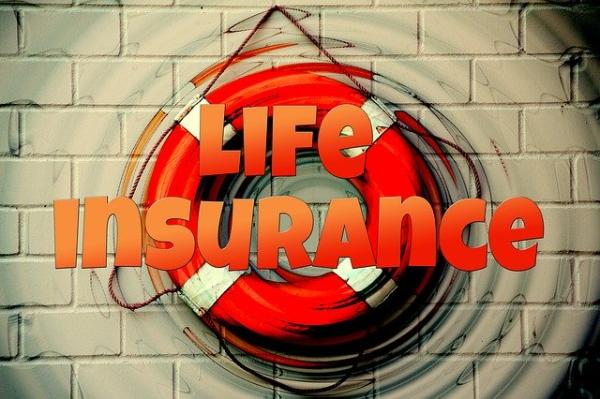I've written previously about the new generation of pharmaceuticals. No longer small compounds, medications are increasingly biologicals, with greater precision, efficacy, and expense. Bio-similars, the biologic version of generics, may have a role, but co-pay expenses increase disparity along the lines of income and shift resources from other family concerns. A new paper from the Social Service Research Network offers an alternative payment approach using life insurance.
Life and Health Insurance
Life insurance, on the face of it, is a strange business where I pay a monthly premium only to see a return when I die. My highest profit comes if I die immediately, my least if I live a long life. The keen observer will note that I said long, rather than long and happy; that is because life insurance is about the quantity of my life, not it's quality. If you are looking to ensure quality, you need health insurance.
At first blush, life insurance seems like a Ponzi scheme. I pay say $1,000 annually for 25 years, and if I die, at that point, my family gets $500,000. In reality, that $1,000 is invested and growing during the interval. Insurance companies need only pay out when someone dies so they could and can use other people's premiums to offset their expenses. But many of those terms policies, which by the way is the most common "financial instrument" Americans own, lapse, meaning they end without a death payment. Hence, all those premiums accrue to the insurers.
Last bit of context. Since 2010, health insurers can not adjust premiums based on your pre-conditions – the cost is the same if you are healthy or if you are taking five medications and see physicians every week. Life insurance premiums can adjust for your current and expected health. Buying at age 20 reduces your premiums compared to purchasing term life insurance at age 40 when you have hypertension and are a bit overweight.
"The main insight is that life insurers benefit from these life-extensions, especially immune-oncology." [1]
The benefit of medication extending your life is clear – you get more quality time. But how do life insurers benefit? First, they continue to get premiums. If you lapse, all the benefit is lost, but it is doubtful that a person in these circumstances would end their policy. During the period of your now extended life, those premiums continue to be invested by the insurance company. Meanwhile, your payment is delayed into the future; a future where the dollar, because of inflation, is worth less. In short, life insurers realize more revenue and a reduced payout.
"Several key parameters determine the benefit to life insurers of a patient diagnosed with a life-threatening disease: the increase in survival probability resulting from treatment, patient demographics, age of diagnosis, and the life insurance premium."
The most crucial variable is the efficacy of treatment, which creates an interesting alignment of interests, both you and your insurance benefit from you receiving life-extending care. There is no similar alignment with health insurance because those treatments cost health insurers more; you are the only one profiting. To curb this "bad" behavior on your part, termed moral hazard, health insurance employs co-pays and deductibles that increase your costs, decreasing theirs.
While life-extension is always beneficial to you, it is never beneficial to a health insurer, but can be to a life insurer.
The economic model
The researchers modeled healthcare costs and life insurance premiums. Using the National Cancer Institute and Centers for Medicare & Medicaid Services data, they noted that immunotherapies for cancer have rapidly expanded in numbers and cancers treated. They have become first-line or parts of combination therapy while remaining very expensive. They are efficacious, demonstrating significant increases in long term survival. Based upon their model's formula, considering the roughly 400,000 individuals who own life and health insurance and are receiving immunotherapy
"…the $9.78 billion benefit to the life insurance sector well exceeds the out-of-pocket costs to consumers of $4.83 billion."
Perhaps only an actuary and the authors can fully understand the math, but bottom line, life insurance could cover those out-of-pocket costs and still turn a significant profit. There are several ways to cover out-of-pocket expenses. For example, the out-of-pocket costs could be paid by the life insurer, and the death benefit reduced by a comparable amount. They note that a policy with a death benefit of only $46,000 could cover $20,000 in co-pays and deductables. Or a patient might borrow the money from the death benefit, kind of like a reverse mortgage – all the past premiums helping to secure the "loan."
Life insurance is a very common "financial instrument" across most of the at-risk economic demographics. Even individuals earning thirty-five to fifty thousand dollars buy term life, and these are the very same individuals most at risk for economic catastrophe in the face of high co-pays and deductibles. And while the paper does an in-depth analysis involving immunotherapy, the concepts could apply equally as well to other chronic conditions such as heart failure, AIDS/HIV, and Hepatitis C.
Limitations
All models have limitations; this one is no different. First, there are the "frictions," an excellent term describing regulatory frameworks that would need to be adjusted. And of course, there would be a shifting decline in profitability as the monies were redistributed. There would have to be some re-jiggering of life insurance rates to account for those profitability changes. And there would be a "moral hazard" – in this case, the tendency of pharmaceutical companies to further raise their prices to take advantage of this newly found source of out-of-pocket expenses.
For those so inclined to "free-market" solutions, this may be an alternative or adjunct to finding means to fund healthcare for all.
[1] Immuno-oncology medications are the poster children of expensive biologicals that extend life. You've seen the ads for drugs for heart failure, metastatic breast, and lung cancer.
Source "Combining Life and Health Insurance∗" SSRN




